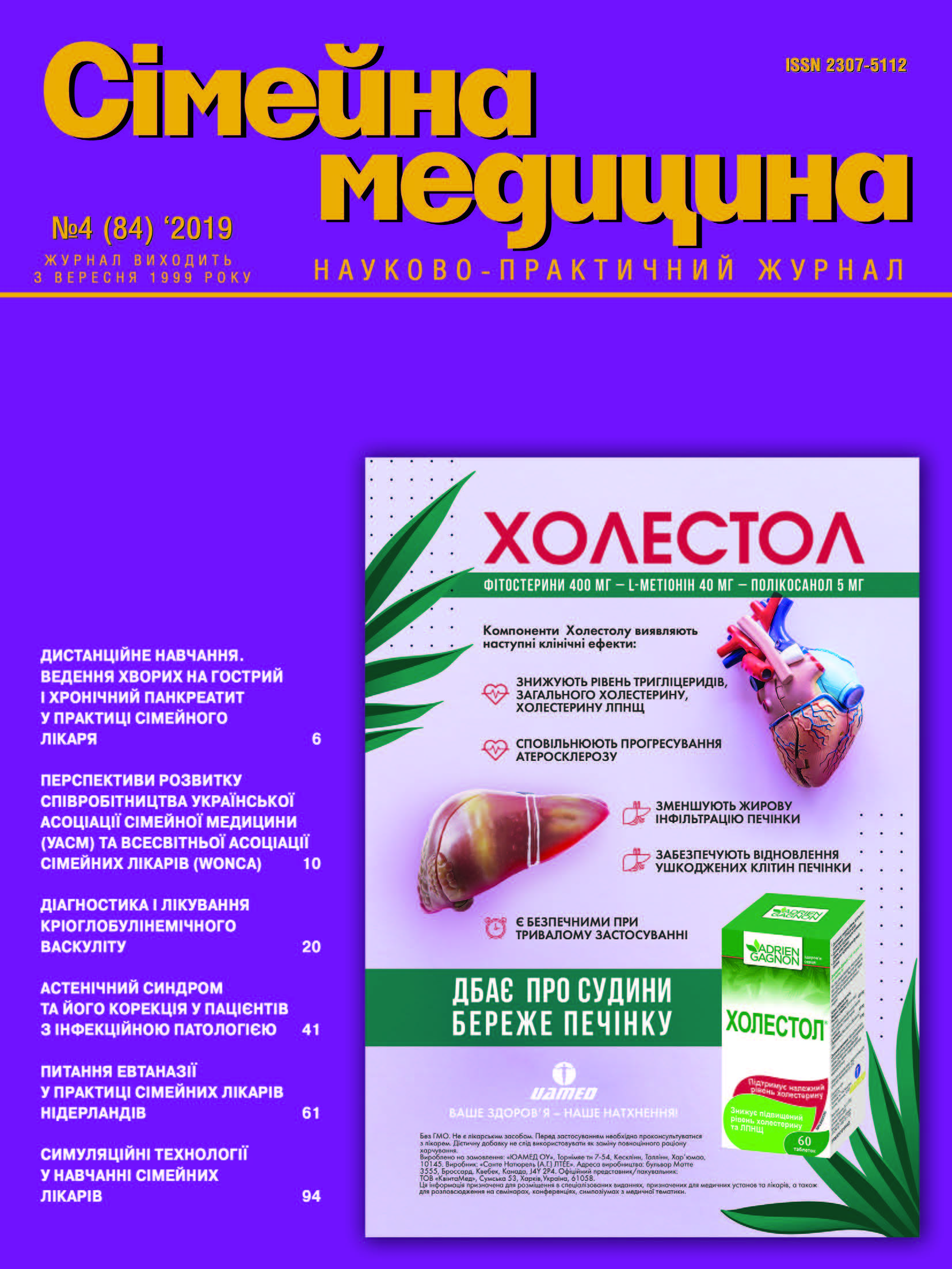The Formation of Resistance to Antihypertensive Therapy in Patients with Hypertensive Disease with Obesity
##plugins.themes.bootstrap3.article.main##
Abstract
The objective: of the study was to study factors that influence the formation of the general resistance in hypertensive patients with obesity.
Materials and methods. 200 patients with hypertension and obesity from 45 to 55 years old were examined, who provided informed written consent to participate in the study and met the inclusion criteria.
Results. The data of the logistic regression method showed that the formation of the general resistance of hypertensive obese patients was influenced by such quantitative indicators as adiponectin (p=0,0113), DBP (p=0,0488), MDA (p=0,0027), TIM CCA (p=0,0091) and blood insulin (p=0,0152). Moreover, qualitative indicators, such as the genetic polymorphism IRS-1 and ADIPOQ (p=0,0000 and p=0,0030, respectively) also influenced the formation of resistance. The greatest degree of influence is characteristic of TIM OCA and genetic polymorphism IRS-1 and ADIPOQ, which was confirmed by the highest values of the regression coefficients. The model of general resistance after treatment included a part of indicators that had an effect on the pre-treatment stage (adiponectin, DBP, MDA and ADIPOQ genetic polymorphism), and new indicators (pulse blood pressure, triglycerides and physical activity). Moreover, indicators such as reduced physical activity, ADIPOQ genetic polymorphism and high triglycerides had the greatest influence on the formation of this model, which was confirmed by the highest values of regression coefficients. ROC analysis confirms the prognostic value of the created model of general resistance in obese hypertensive patients.
Conclusion. А model of general resistance was created with the identification of factors that have the greatest influence on the formation of resistance to antihypertensive therapy in patients with comorbidity of hypertension and obesity.##plugins.themes.bootstrap3.article.details##

This work is licensed under a Creative Commons Attribution 4.0 International License.
Authors retain the copyright and grant the journal the first publication of original scientific articles under the Creative Commons Attribution 4.0 International License, which allows others to distribute work with acknowledgment of authorship and first publication in this journal.
References
Risk of cardiovascular disease associated with refractory hypertension in renal transplant recipients / G. Fernandez-Fresnedo [et al.] // Transplant Proc. – 2010. – Vol. 42. – P. 2908–2909
ESC/ESH Guidelines for the management of arterial hypertension. European Heart Journal (2018) 00, 1–98. doi:10.1093/eurheartj/ehy339.
Tobe S.W. Resistant hypertension / S.W. Tobe, R. Lewamczuk // Can. J. Cardiol. – 2009. – Vol. 25, № 5. – P. 315–317.
The impact of physical activity on mortality in patients with high blood pressure: a systematic review / A. Rossi [et al.] // J. Hypertens. – 2012. – Vol. 30. – P. 1277–1288.
Kovalenko V.M. Khvoroby systemy krovoobihu yak medyko-sotsialna i suspilno-politychna problema. Analitychno-statystychnyi posibnyk / V.M. Kovalenko, V.M. Karnatskyi // Kyiv, 2014. – 279 p.
Differential control of systolic and diastolic blood pressure: factors associated with lack of blood pressure control in the community / D.M. Lloyd-Jones [et al.] // Hypertension. – 2000. – Vol. 36. – P. 594–599.
Normal weight obesity: a risk factor for cardiometabolic dysregulation and cardiovascular mortality / A. Romero-Corral, V.K. Somers, J. Sierra-Johnson et al. // Eur Heart J. – 2010. – Vol. 31. – P. 737–46.
Obesity dilemma in the global burden of cardiovascular diseases / M. Boban, V. Persic, Z. Jovanovic et al. // Int J Clin Pract. – 2014. – Vol. 68 (2). – P. 173–9.
Narkiewicz K. Obesity and hypertension – the issue is more complex than we thought / K. Narkiewicz // Nephrol. Dial. Transplant. – 2006. – Vol. 21. – Р. 264–267.
Laurent S, Cockcroft J, Van Bortel L et al. Expert consensus document on arterial stiffness: methodological issues and clinical applications. Eur Heart J. 2006;27 (21):2588–2605.
Cruickshank K, Riste L, Anderson SG, Wright JS, Dunn G, Gosling RG. Aortic pulse-wave velocity and its relationship to mortality in diabetes and glucose intolerance: an integrated index of vascular function? Circulation 2002;106:2085–2090.





